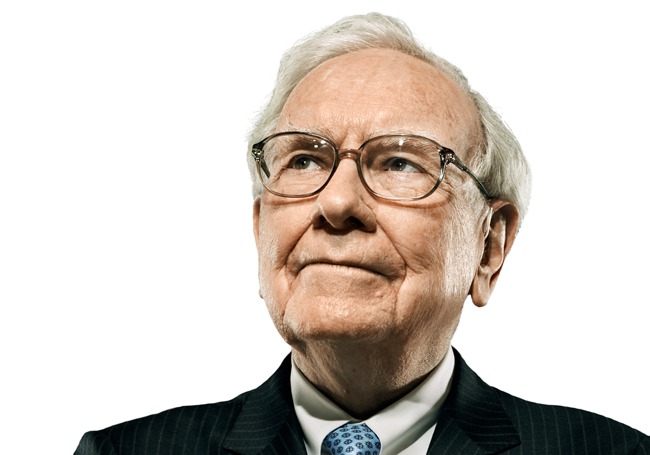Capital Allocation & Capital Management – What is good and what is bad
Everyone who has read Thorndikes book “The Outsiders” clearly knows that capital allocation& capital management is one of the most important factors in creating long term shareholder value. After I watched Thorndike give a briliant talk at Google on this topic, I decided to write down my own thoughts on the topic.
What is CAPITAL ALLOCATION & CAPITAL MANAGEMENT anyway ?
CAPITAL ALLOCATION is simply what you do with your profits/cash inflows once they are in your account. You can do a lot of things with it. Thorndike in the talk above uses 5 uses, I would add another 2 (in bold)
1. Reinvest: Maintain your existing assets/infrastructure/operations
2. Grow organically: Expand your business by buying more machines/outlets/opening stores etc.
3. Expand your business by M&A
4. Pay back liabilities (debt, payables, pension liabilities etc.)
5. pay dividends
6. buy back shares
7. just leave the cash on your account and wait for better opportunities
If we expand the framework to include additional outside capital, we would speak of CAPITAL MANAGEMENT, there is even more you can do:
8. Issue more debt (and use it as described above)
9. Sell assets (subsidiaries etc.) or do spin-offs
10. Issue more shares (and allocate it as described above)
What is considered GOOD capital allocation
I think at least within value investing circles, three persons stand out as great capital allocators/managers: Warren Buffett, Henry Singleton and John Malone.
Warren Buffett as capital allocator

Buffett clearly uses many of the instruments above, with exceptions/modifications:
– he never pays out dividends as he deemes them to be tax inefficient
– he never bought back shares in larger quantities as he thinks he can allocate into better opportunities. Although he made a “pledge” at one point to buy back below 1,2 times book
– he issues a lot of debt in the form of Reinsurance contracts, he uses non recourse debt at subsidiary level
– although he had sold stocks, he has never sold a fully owned business to my knowledge
– he always seems to be able to find good opportunities to deploy capital
– he grows both organically (for instance utilities) but also does a lot of M&A
– he accumulates cash for some time to be able to strike when things are cheap
– he focuses on return on capital metrics and per share growth, not absolute growth or (smooth) accounting income
– his interests as big shareholder and CEO with a tiny salary are well aligned with shareholders
– he allocates capital across many industries
– his time horizon is very long term
Henry Singleton master allocator

The founder of Teledyne is less know but his track record was a least as good as Buffet’s. There is a very good summary to be found on CS Investing.
His success can be contributed mainly to the following
– he used his expensive stock in the beginning to pay for acquisitions
– he didn’t reinvest that much into existing businesses but used the cashflow to acquire other businesses or stocks
– when his own stock became cheap he bought back most of the outstanding stocks, also using leverage
– used spin-offs often
– he never paid cash dividends
– he did accumulate cash balances before he then allocated them opportunisitcally
– used Insurance float similar to Buffett
– focused on per share value not earnings
– owned significant stake in his company, didn’t pay himself a large salary
John Malone “Capital Cowboy”

– he never paid dividends, not even showed accounting profits
– maximum amount of leverage
– allocated capital within a narrow range (cable and media)
– existing business “stripped to the core”
– Master of the stock swap and “spin-off”
– long term horizon
– owned a signifcant stake in his company (Liberty)
Is there a common theme ?
There are clearly fundemantal differences. Berkshire and Teledyne were conglomerates, Malone had a more focused cable & media empire. Buffett started with stocks and moved to buy complete businesses, Singleton the other way round. Nevertheless, I think there are somecommon themes here to be found:
– all three had a long term focus
– in every case the CEO was/is a significant owner and fully aligned long term with outside shareholders
– Cost conscious: No fancy headquarters, no company jet fleet
– active use of different funding sources (debt, equity, Float)
– they are/were not focusing on smoothly growing accounting incomes, or even completely ignore the GAAP results
– they were all active in the M&A market
– all showed countercyclical behaviour
– return on investment/ Return on capital employed as major management target
How to identify bad Capital Allocation / Capital Management
Identifying bad capital allocation is actually a lot easier (and more common) than good capital allocation. The list is almost endless but let me list a few cases I had covered in my blog:
- Buying back shares at peak prices financed by debt (Fossil)
- Building lavish new headquarters at the top of the cycle (EVS)
- Investing into “trophy assets” (IVG, Swatch)
- M&A at the top of the cycle (Siemens, Dresser Rand)
- Issuing new shares in a crisis situation (Italian banks, Imtech etc.)
- Trying to transform the business via a series of M&A transactions (Bilfinger, TUI, HPQ)
- Paying “strategic prices” for acquisitions (SAP)
- Reinvesting in “dead assets” (E.On, RWE)
- Paying high dividends fincanced by debt (E.ON, RWE)
- M&A as only growth strategy (Valeant)
- using hybrid debt to replace equity capital (almost all banks, some corporates)
- starting massive investment programs at the top of the cycle (Volkswagen)
- Market share / sales / EBITDA as success measure for management (E.On)
- Fire sales of assets because of too much debt (Valeant)
Special case: Share buy backs vs. new share issuance
These days, in for many investors the following equation seems to be a no-brainer:
Share buybacks = great capital allocation
In a presentation on Henry Singleton, Leon Cooperman has nicely sperated 4 different types of share buy-backs:
Cooperman classifies share buybacks into four categories: o
Type I: Combats the impact of option dilution
Type II: Assists executives that are exercising options
Type III: Company has no opinion on value but the buyback is done to return capital to shareholders
Type IV: Company believes the stock is undervalued and repurchases share
Clearly Type IV is the most value enhancing but also the rarest form. So beware of Type I and Type II buy backs and don’t get too enthusiastic about Type III !!!
On the flip side, any issuance of new shares is considered “bad capital management”. But again, this highly depends on the situation. If you issue expensive stock to buy cheap assets, then it is clearly value enhancing. If you issue stock to settle managemnt’s options, then most likely not.
Capital Allocation skills vs business environments
Capital Management alone will not guarantee success, this is clear. You can have pretty bad capital allocation /management skills and still make a lot of money if you happen to be in the right industry at the right time (for instance technology).
You can also show good capital alloctation skills and suffer a huge down turn because of a crisis in your industry (TGS Nopec, Kinder Morgan, Leucadia, Loews).
In the long term however, I do think there is a very strong correlation between capital management skills and company success.
Survivorship bias
One grain of salt here: Books like “The Outsiders” which look (only) at successful companies are always subject to a certain “survivorship bias”. We do not know how many companies maybe used similar ways of doing things and were not successful. In Malone’s case for instance there was clearly some luck at play as he almost went bankrupt in the very beginning. If this situation would have happened in an environment like 2008, he might not have survived it.
The essence
In my opinion, the two most important aspects of capital allocation are the following:
- Long-term alignment of managment and shareholders
- “Walking the talk”
Without proper alignment, capital management will be in the best case random but far more often harmful. CEOs with huge cash settled option packages that mature in 1 or 2 years often do things that are harmful in the long term.
On the other hand, the fact that a CEO owns a certain percentage of the company also doesn’t guarantee success (see Dick Fuld at Lehman or Globo) but clearly increases the probabilities. But beware of shares being pledged against personal loans and other “shananigans”.
And finally, talk is cheap. Over the last years many CEOs started to quote Warren Buffett or other great capital allocators but actually doing those things is still hard. So pay attention if someone is really doing what she/he is claiming to do.
Do check if the made M&A transactions on 2009 and 2012 or if they bought as everyone else in 2007 or 2015.
Just as a matter of interest:
How do you handle “the withdrawal tax refund” you are entitled to from the French tax authorities re your IGE&XAO dividend due to the double tax treaty. My experience is that you cannot get it out of the French authorities. You have to deal with a bank who charges for “this service”. And if you do not have a very sizable position, this does not make sense.
I don’t worry too much about it and book it mentally as “support for the European Union”. At ~1,4% dividend yield, this “leakage” is not that significant in my opinion.
You mentioned some good examples, but in the case of SAP I would not diagnose bad capital allocation.
I was also skeptical because of the high acquisition prices. However, Ariba and SuccessFactors have so far supplied. Regarding Concur (2014) we’ll see. At least Concur now has 40 million users after 25 million five quarters ago.
In 2009, Sybase had 3% DBMS market share. In 2014, SAP – thanks HANA and Sybase – had 6.9% DBMS market share and higher growth rates than Oracle, Microsoft, Teradata, and IBM in this segment.
In May 2012, the Ariba network was supporting more than $319 billion in B2B transactions on annual basis and more than 730,000 companies. In the most recent quarter, it was more then $800 billion and 2.1 million companies. Ariba is using a value based transaction fee model.
SuccessFactors’ and now SAP EmployeeCentral seems to be successful, beyond the talent management suite.
High ROIC and economies of scale for software products enable growth with low capital requirements. There were cross selling opportunities and network effects are reinforcing the moat.
The acquisitions have suited SAPs longtime strategy of improving business processes, including business partners (“closed loop”). Not necessarily a bad thing.
In the most recent quarter, FCF, IFRS and non-IFRS earnings per share were significantly higher than six years ago.
Of course, at some point it might run worse and they could write-off some goodwill. Who knows? Today I see SAP not as an example for bad capital allocation. Not really good, not really bad.
#Welju,
thank you for the comment but I think you completely miss my point: It does not matter that FCF/IFRS/Non IFRS earnings are up per share.
What matter is that ROE, ROCE, ROIC are all significantly down and at all time lows. SAP is using disproportionally more capital (including debt) to create this earnings increase which in turn is a clear sign of BAD capital management.
This is exactly the reason why German/European companeis create comparably little shareholder value.
Your examples for good capital management are, as you said, “all active in the M&A market”. Had they kept a ROA of 20% or a ROIC of 30%? I don’t think so.
I guess that SAP’s ROE, ROA, ROCE, and ROIC could go significantly up this year. High acquisition-related and restructuring expenses should not be normal at SAP.
If and when the profitability of the “subscription economy” will be similar to the license business, remains to be seen. Adobe already achieved the turnaround in profitability.
SAP’s history gives me no reason to conclude that they “create comparably little shareholder value”. (My first investment there was in 1996.) Of the publicly traded software companies known to me, SAP is among the top 5%.
Projections into the future arte always difficult. So I look at the past and the present. SAP’s ROE went down from 30% in 2006 to 14% in 2015. This means that their M&A activity doesn’t look really value creating.
If you look at how managment is compensated, return on capital is nowhere to be seen.
That doesn’t mean that SAp is a bad company, I think they do have a good product and also some kind of moat. But they are definitely (up to now) not a good capital allocator.
I own for instance IGE&XAO, a tiny French Software company. Despite piling up cash on their balance sheet, their ROE remained relatively constant over 10 years, their Return on net invested capital steadily increases. And they don’t even do something active, they just do nothing…..
Yes, small caps like IGE & XAO or SLP have better organic growth und capital allocation opportunies, in particular with high ROIC.
Very good post (and so is the Google video you linked)!
Lots of companies seem to focus a lot on achieving excellence in operations and think that capital allocation should not be given much thought, as it won’t influence the share price too much.
And in today’s world (with low interest rates), the temptation to issue debt and repurchase shares (even overpriced shares) just to please some shareholders in the short term seems to affect a lot of companies.
In Europe, for instance, we seem to have a lot of great companies that can come up with new products, but are starting to be less and less visible/competitive because they refuse to commit massive investments in cutting edge technologies. And a lot are also notorious for bad capital allocation (especially acquisitions, but we can add share repurchases to the list after the last few years).
Capital allocation seems to be a way bigger issue for us, Europeans, than for other regions. Yet I don’t see too many companies tackling or even mentioning it. Every annual report seems to only focus on the same old things: low growth environment, interest rates and inflation (thankfully this seems to be used less and less). Too bad others were able to move forward and find growth, looks like they don’t have to deal with a “low growth environment” .
Excellent post.
I suppose it’s not a coincidence that many great capital allocators come from the U.S., and many poor ones come from elsewhere.
I seems that the Nordics also have a few good allocators,with TGS Nopec, Assa Abloy, Sampo.
Who are the great allocators in the rest of Europe? Ryanair?
Check out Kone Oyj (Finland). They to do a very, very good job at allocating capital while also improving their operations year after year.
Thanks for your great article.
Are there any german/german-speaking “capital-allocation-Gurus” known?
Good question.I couldn’t name any.
Roland Slabke….CEO of german fintech company Hypoport AG
Any particular opinion on Fuchs Petrolub as a capital allocator? (no hurry, you can answer when you’re back from holidays…)
Great post
can’t you be a great allocator and manager/shareholder yet still not care about the outside passive minority investors ?
yes I guess so. I would consider some of the famous Private Equity Gurus into that category.
Great article, thank you.
that’s a great post.
regarding the bad signs – some are very obvious (like issuing debt and equity and paying dividends- which brings us back to KMI- but that’s another story)
but some are very hard to spot like
starting massive investment programs at the top of the cycle
or
M&A at the top of the cycle
I mean- if a knew when is the top of the cycle and where is the bottom i would be supper rich
Yes, clearly the bottom of the cycle and the top of the cycle always are much easier to spot afterwards 😉
But you can check the track record. Did a company do a lot of M&A in 2006&2007 or in 2009&2010 ? Who did invest in Emerging markets in 2013-2014, who is investing now ? This is not that hard to find out.